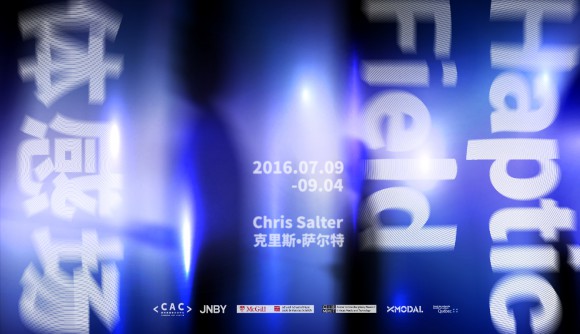
Arthub Favorite #25
This weekend is action-packed, so Arthub can’t help but to feature several “weekly” favorites. Yesterday’s post highlighted the solo show of Sanitas Pradittasnee in Bangkok, but we don’t want to leave our dedicated Shanghai followers wanting. So make sure to pop over to Chronus Art Center (one of our preferred venues) this Saturday for Haptic Field, with American artist Chris Salter and Italian artist and musician TeZ Maurizio Martinucci.
The exhibition showcases a large participatory multi-sensory installation by Salter in collaboration with TeZ. Haptic Field merges contemporary fashion, wearable technology and an exploration of the senses. Employing garments especially designed and produced by the Chinese fashion brand JNBY, the installation creates a singular and uncanny physical experience, giving us the impression that our senses are stretched beyond the body’s boundaries.
Duration: July 9 – September 4, 2016
Venue: Chronus Art Center, BLDG.18, No.50 Moganshan Rd., Shanghai
Artist: Chris Salter, collaboration with TeZ Maurizio Martinucci
During the opening weekend, the artist will also deliver a lecture entitled FROM SENSORS TO SENSATION: The ‘Sensory Turn’ in Contemporary Art which is also part of CAC’s Leonardo Art, Science and Technology Lecture Series. Together with Ian Hattwick, the artist will also lead a workshop entitled “Playing with Touch” on 10th July.
Specifically developed and produced for CAC, Haptic Field lies at the intersection of four diverse areas: art involving the senses, new wearable technology, sensory anthropology – the study of the senses cross-culturally, and the science of haptics. It forms part of the artists’ continued exploration into the extension of the human sensorium within our contemporary technosphere.
In Haptic Field, the entire CAC space is transformed into a continually shifting, hallucinatory, almost dream-like environment. Nothing is what it seems and vision gives way to the experience of other senses like touch, sound, proprioception, the experience of time and the invisible presence of others. In the exhibition, up to twenty visitors can be accommodated at any point in time. Visitors arriving at the CAC space will find a dressing area with a full-length mirror in front of which they put on the specially designed garments with the help of a set of video instructions. Each of the garments consists of a one-piece unit with attached hood and visor that visually suggests a cross between science fiction and high fashion. The hood of the garment completely blurs and distorts the visitors’ ability to see. The entire visual sense transitions into a blurry, non-defined field, as if walking through thick fog. In the meantime, with a series of new custom designed wireless actuators securely attached to each of the costumes, a range of vibrations are felt. These feelings of touch snake across the visitors’ bodies, from the legs to the arms and chest in continuous movement giving the impression that one’s body has been possessed by unfathomable outside forces. Light emitted from the visitors’ bodies and from light sources in the environment resembles fleeting, undefined forms, continually appearing and disappearing around one’s body and changing in color and intensity. Light, sound and touch become distributed among bodies – dynamically shifting back and forth, like an immense haptic field – a distributed field of touch.
Haptic Field places touch – a sensory modality that has long been viewed as a forgotten, “unhistoricized” sense, as the cultural historian Constance Classen claims – at the centre of the experience. The installation thus seeks to create a more experiential understanding of the “virtual senses of touch” and how it crosses over and “interferes” with the other senses. Through this interference, we newly question the classic reduction of senses into five discrete categories for which the Greek philosopher Aristotle is blamed. We demonstrate that the senses are not separate and that in fact, the boundaries between our different senses are culturally shaped and constructed. Furthermore, the installation explores how new technologies work to increasingly extend, shape and transform our sensorial experience within our socio-technical environment.
The wireless devices employed in Haptic Field are designed and developed specifically by the IDMIL (Input Devices and Music Interaction Laboratory) at McGill University in Montreal. These devices go beyond the current conception of haptic technologies that approach tactile experience as information transferred between senders and receivers of “messages.” Instead, through artistic practice, Haptic Field brings new thinking and experience to the emerging socio-cultural paradigm of touch and technology.
For details about the exhibition, please see CAC’s website here.